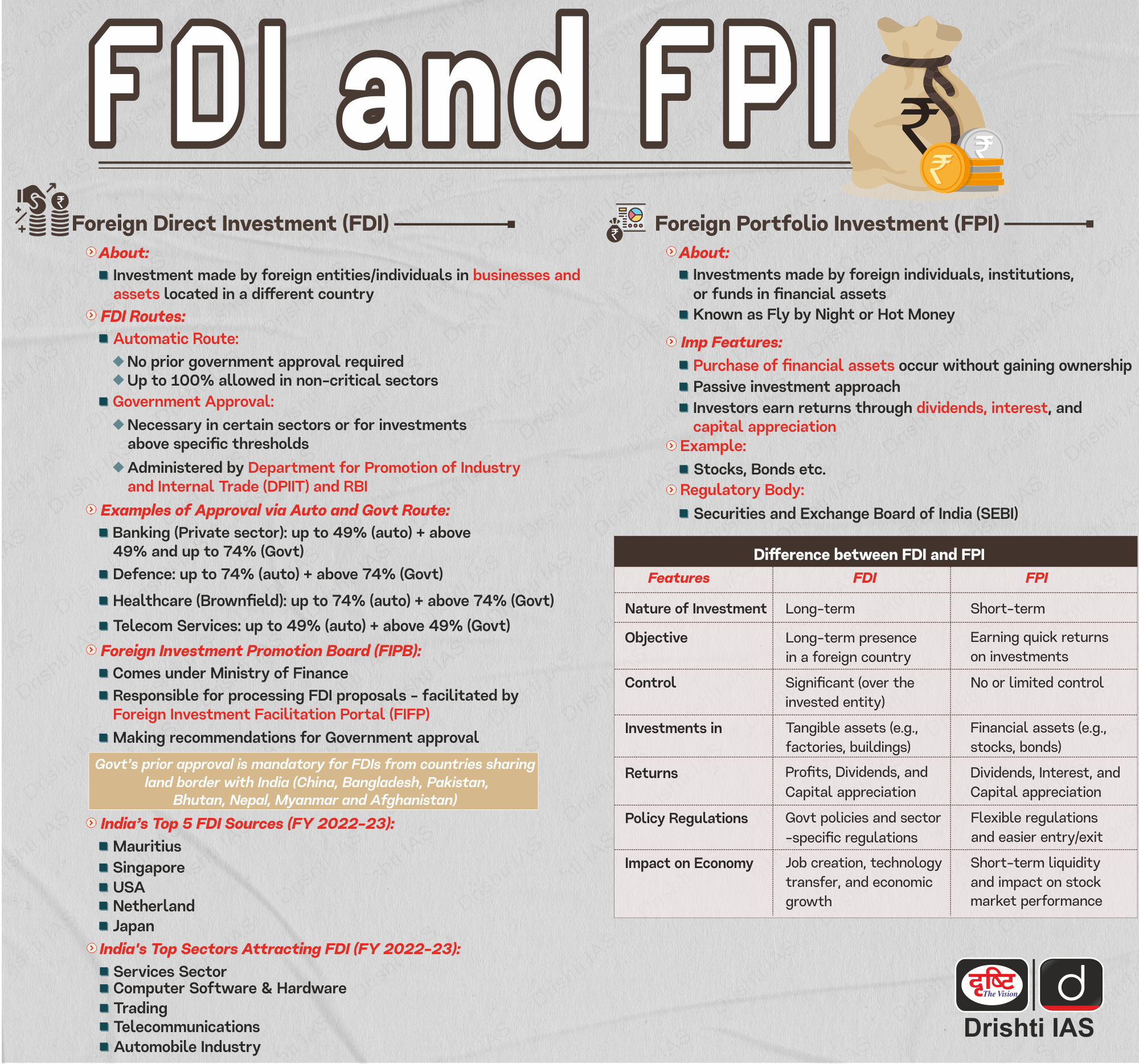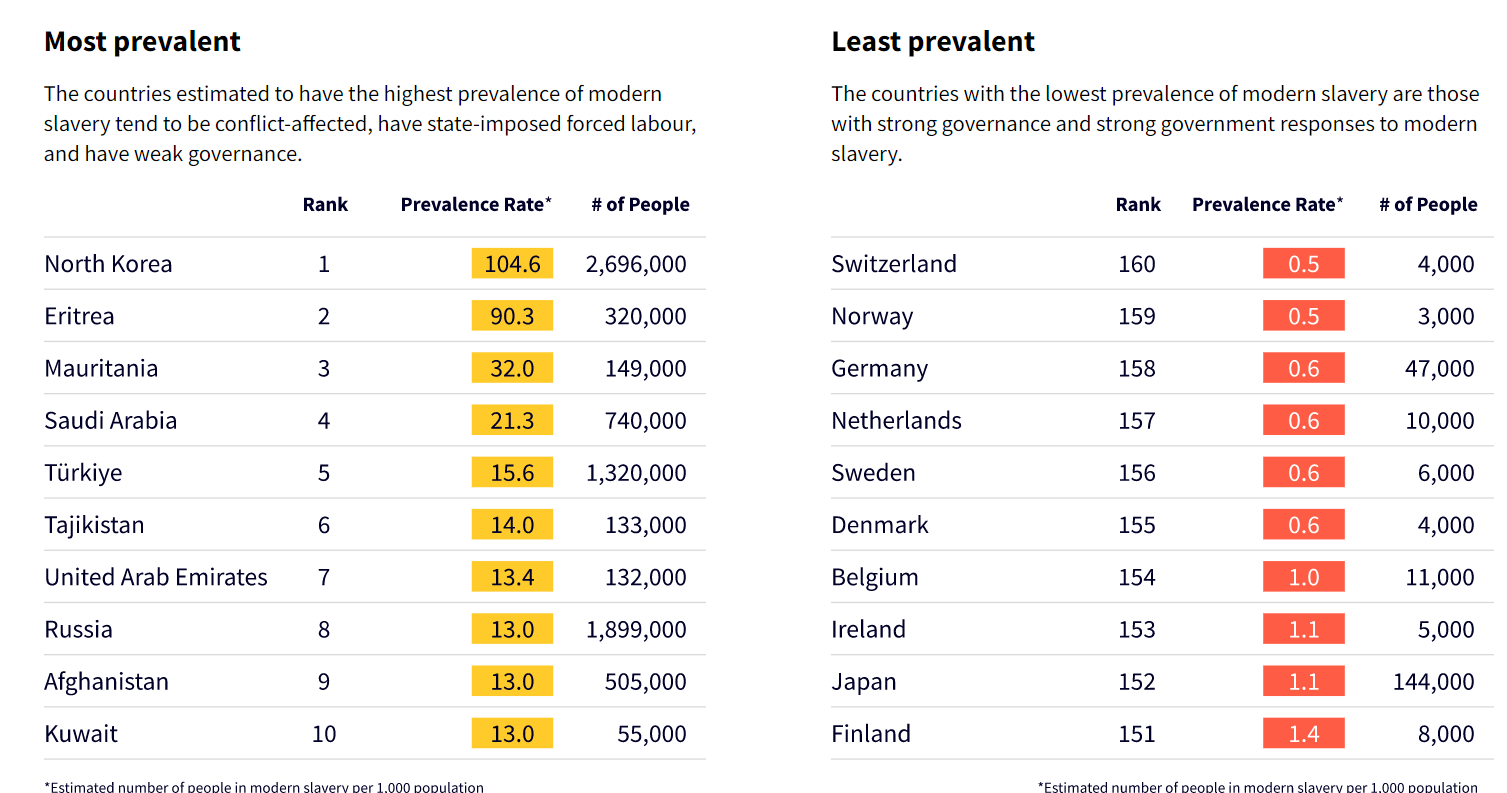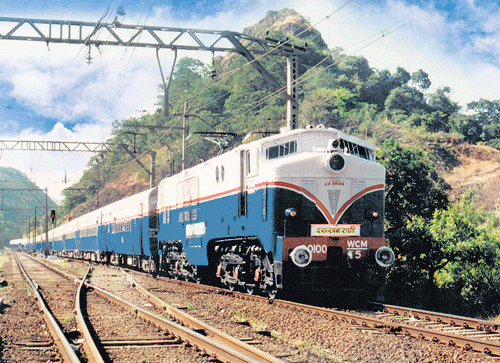Infographics
Social Justice
Global Slavery Index 2023
For Prelims: Modern slavery, G20 nations, Terrorism, Bonded Labour Abolition Act of 1976, Article 23 of the Constitution.
For Mains: Major Takeaways of Global Slavery Index 2023, India's Stance Related to Modern Slavery.
Why in News?
A new report, ‘The Global Slavery Index 2023’, by the Walk Free Foundation, highlights the increasing prevalence of modern slavery worldwide, with the number of people living in such conditions reaching 50 million—an alarming 25% rise in the past five years.
- The report emphasises the significant role played by G20 nations in exacerbating this crisis through their trade operations and global supply chains.
- India, China, Russia, Indonesia, Turkey, and the U.S. are among the top G20 countries with the highest number of forced labourers.
What is Modern Slavery?
- Modern slavery encompasses various forms of exploitation, including forced labour, forced marriage, debt bondage, commercial sexual exploitation, human trafficking, slavery-like practices, and the sale and exploitation of children.
- Modern slavery has devastating consequences for individuals, communities, and societies.
- It violates human rights, undermines human dignity and erodes social cohesion.
- It also hampers economic development, perpetuates inequality, and fuels corruption. It poses a threat to global security and stability by fuelling conflict, terrorism, and organised crime.
What are the Major Takeaways of Global Slavery Index 2023?
- Key Highlights:
- According to the Global Slavery Index 2023, an estimated 50 million people were living in modern slavery on any given day in 2021, an increase of 10 million people since 2016.
- This means that one in every 160 people in the world is a victim of modern slavery.
- It ranks 160 countries based on their estimated prevalence of modern slavery per 1,000 people.
- The countries with the highest prevalence are North Korea (104.6), Eritrea (90.3), and Mauritania (32.0), where modern slavery is widespread and often state-sponsored.
- The countries with the lowest prevalence are Switzerland (0.5), Norway (0.5), and Germany (0.6), where strong governance and effective responses to modern slavery are evident.
- Asia and the Pacific has the largest number of people in modern slavery. (29.3 million)
- India has the prevalence of 8. (Estimated proportion of population living in modern slavery per thousand people).
- According to the Global Slavery Index 2023, an estimated 50 million people were living in modern slavery on any given day in 2021, an increase of 10 million people since 2016.
- Contributing Factors:
- The report identifies climate change, armed conflict, weak governance, and health emergencies like the Covid-19 pandemic as key factors that have contributed to the rise in modern slavery.
- G20 nations account for more than half of all people living in modern slavery, primarily due to the importation of products worth USD 468 billion from countries with weak worker protection, thereby worsening forced labour conditions.
- The report identifies climate change, armed conflict, weak governance, and health emergencies like the Covid-19 pandemic as key factors that have contributed to the rise in modern slavery.
- Role of Global Supply Chains:
- Complex and opaque global supply chains, which involve the sourcing of raw materials, manufacturing, packaging, and transportation, are deeply entangled with forced labour.
- The report highlights the importation of high-risk products, such as electronics, textiles, palm oil, and solar panels, and their association with forced labor, human trafficking, and child labour.
- It reveals that G20 countries collectively import billions of dollars worth of textiles and apparel goods at risk of being produced by forced labour every year.
- Assessment Methodology:
- Factors such as political instability, inequality, lack of basic needs, criminal justice mechanisms, internal conflicts, and displacement defined a nation's vulnerability to modern slavery.
- The index uses data released by the International Labour Organisation (ILO), Walk Free, and the International Organisation for Migration (IOM) in 2022 to illustrate how “modern slavery is hidden in plain sight”
- Case Study: Textiles Industry:
- The report highlights the textiles industry as a significant contributor to forced labour. It describes conditions of forced and unpaid work, health and safety risks, poor wages, lack of benefits, and debt bondage.
- The Sumangali scheme in Tamil Nadu is cited as an example of exploitative conditions trapping women and girls in spinning mills.
- International Efforts and Challenges:
- Despite the adoption of a goal to end modern slavery, forced labour, and human trafficking by 2030, the report highlights the significant increase in the number of people living in modern slavery and the lack of progress in government action.
- The report attributes the increase of 10 million people to compounding crises, including armed conflicts, environmental degradation, assaults on democracy, global rollback of women's rights, and the economic and social impacts of the COVID-19 pandemic.
- Despite the adoption of a goal to end modern slavery, forced labour, and human trafficking by 2030, the report highlights the significant increase in the number of people living in modern slavery and the lack of progress in government action.
- Recommendations:
- The Global Slavery Index recommends implementing stronger measures and legislations to prevent governments and businesses from sourcing goods and services linked to modern slavery.
- The report also suggests embedding anti-slavery measures in climate change sustainability plans, providing education to children, tightening regulations around child marriage, and ensuring transparency in value chains.
What is India's Stance Related to Modern Slavery?
- Legislative Framework:
- India has taken legislative measures to combat modern slavery, including the Bonded Labour Abolition Act of 1976 (the Act was amended in 1985 to include contract and migrant workers) and the Central scheme for Rehabilitation of Bonded Labour.
- The Supreme Court has also ruled that non-payment of minimum wages amounts to “forced labour” under Article 23 of the Constitution.
- Challenges:
- Challenges remain in implementation of the Acts, corruption, legal loopholes, and lack of politics that hinders effective eradication of modern slavery in the country.
- For instance, Growing evidence shows indigenous communities and those engaged in fishing and agriculture in States like Odisha and West Bengal have become victims of debt bondage, human trafficking and mass displacement.
- Challenges remain in implementation of the Acts, corruption, legal loopholes, and lack of politics that hinders effective eradication of modern slavery in the country.
- Need of the Hour:
- Multi Pronged Approach:
- Government needs to enact and enforce laws that criminalise all forms of modern slavery and protect the rights of victims.
- Businesses need to ensure that their operations and supply chains are free from forced labour and human trafficking.
- Civil society needs to raise awareness, advocate for change, and provide support to survivors.
- Individuals need to educate themselves about the issue, demand transparency from companies they buy from or invest in, and report any suspected cases of modern slavery they encounter
- Survey on Bonded Labour:
- There is also a need to property identify and enumerate people stuck in modern slavery conditions. India’s last national survey of bonded labour was done in the mid-90s.
- Multi Pronged Approach:
Note: Walk Free is an international human rights group focussed on the eradication of modern slavery, in all its forms, in our lifetime.


Social Justice
76th Annual World Health Assembly
For Prelims: World Health Organization, World Health Assembly, G20, Ayushman Bharat
For Mains: India’s participation in the World Health Assembly, World Health Organisation functioning, Significance of India's contributions in medical value travel
Why in News?
Recently, the 76th annual World Health Assembly was held at World Health Organization (WHO) Headquarters(HQ), Geneva, Switzerland, from 21st to 30th May 2023.
- The theme for 2023 is "WHO at 75: Saving lives, driving health for all."
- The participation of Prime Minister Narendra Modi and Union Health Minister in the 76th World Health Assembly highlighted India's commitment to global health.
- Taiwan was excluded from the WHO assembly due to opposition from China and Pakistan.
What is the World Health Assembly?
- About:
- The World Health Assembly (WHA) is WHO’s decision-making body attended by delegations from all of WHO’s member states.
- It is held yearly at the HQ of WHO, i.e., Geneva, Switzerland.
- Functions of WHA:
- Deciding on Organization’s policies.
- Appointment of the Director-General of WHO.
- Administration of financial policies.
- Review and approval of the proposed programme budget.
What are the Key Highlights?
- Global Plan for Indigenous Health:
- Draft resolution accepted for developing a Global Plan of Action for the Health of Indigenous People.
- The plan will be considered at the 79th World Health Assembly in 2026.
- Consultation with indigenous peoples and their free, prior, and informed consent emphasized.
- Addressing challenges such as poverty, violence, discrimination, and limited access to healthcare.
- Focus on reproductive, maternal, and adolescent health, vulnerable situations.
- Members were urged to collect ethical data to identify specific requirements of indigenous people.
- Aimed at improving the health and well-being of indigenous populations.
- Draft resolution accepted for developing a Global Plan of Action for the Health of Indigenous People.
- Global Alliance for Drowning Prevention:
- Global Alliance for Drowning Prevention was established during the 76th WHA meeting.
- Aims to address global public health concerns related to drowning by 2029.
- WHO to coordinate action and prepare a global status report on drowning.
- Drowning has a significant impact on the world's poorest populations.
- Over 90% of drowning deaths occur in low- and middle-income countries.
- Official global estimate of drowning deaths may be significantly underestimated as they exclude drownings attributable to flood related climatic events and water transport incidents.
- Draft Resolution on Chemicals, Waste, and Pollution:
- Draft resolution on chemicals, waste, and pollution impact accepted during 76th World Health Assembly.
- WHO urged to update Endocrine Disrupting Chemicals report with United Nations Environment Programme.
- Limited data on chemical exposures and health concerns highlighted.
- Resolution encourages regulatory frameworks, biomonitoring, and risk identification for chemicals of concern such as cadmium, lead, mercury etc.
- Concern over poor chemical waste management and long-term health effects are raised.
- Request for WHO report on human health implications and data gaps.
- Importance of data organization by sex, age, disability, and harmful substances.
- WHO Program Budget:
- WHO member states agreed on a budget of 6.83 billion USD for 2024-2025, including a 20% increase in assessed contributions.
- Over the past few years, assessed contributions had declined, accounting for less than one-quarter of WHO's financing.
- Top contributors include Germany, Bill and Melinda Gates Foundation, US, UK, and European Commission.
- WHO's reliance on voluntary contributions raises governance concerns and affects sustained technical cooperation and goal achievement.
- Highlighted contributions that hinder the WHO's ability to provide effective technical cooperation and achieve the Triple Billion targets for improving health of all by 2023.
Note:
Triple billion Targets: The goals of the Triple Billions are simple and straightforward. By 2023, WHO proposes to achieve:
- 1 billion more people benefitting from universal health coverage
- 1 billion more people better protected from health emergencies
- 1 billion more people enjoying better health and well-being.
- Replenishment Mechanism:
- Member states welcomed a new replenishment mechanism to provide flexible funding options for the WHO.
- Currently, the majority of WHO's funds come from specific voluntary contributions, leaving little flexibility for shifting funds as needed.
- The replenishment mechanism aims to raise voluntary contributions to cover the unfunded portion of WHO's base segment and ensure financial sustainability.
WHO Funding:
- Assessed contributions:
- Calculated as a percentage of a country's gross domestic product.
- Account for less than 20% of the total budget of WHO
- Approved every two years at the World Health Assembly.
- Voluntary contributions:
- Account for more than three quarters of the Organization's financing.
- Come from Member States and other partners.
- Further categorized based on flexibility:
- Core voluntary contributions (CVC):
- Fully unconditional and flexible, representing 4.1% of all voluntary contributions.
- Thematic and strategic engagement funds:
- Partially flexible, representing 7.9% of all voluntary contributions in 2020-2021.
- Specified voluntary contributions:
- Tightly earmarked to specific programmatic areas and/or geographical locations, representing 88% of all voluntary contributions.
- Core voluntary contributions (CVC):
- Pandemic Response Funding:
- WHO receives additional funding from various sources in response to global health emergencies, including pandemics.
- The Covid-19 Solidarity Response Fund was established during the COVID-19 pandemic to receive contributions from governments, organizations, and individuals.
- India’s Participation:
- Emphasized the importance of collaboration and resilient global health systems.
- Highlighted India's contribution of 300 million COVID-19 vaccine doses to over 100 countries.
- Stressed the significance of traditional systems like Yoga and Ayurveda.
- Mentioned the establishment of WHO's Global Centre for Traditional Medicine in India.
- Supported the G20 theme of 'One Earth, One Family, One Future'.
- Shared India's achievements in healthcare and the Ayushman Bharat scheme.
- Expressed willingness to support WHO in low and middle-income countries.
- Highlighted India's contributions in Medical Value Travel and commitment to Tuberculosis elimination.
- Emphasized the 'Heal by India' initiative, promoting AYUSH treatments globally.
- Stressed the importance of inclusive growth and healthcare for all.


Governance
Article 299 of the Constitution: Government Contracts
For Prelims: Article 299 of the Constitution, Supreme Court of India, Government contracts
For Mains: Role of Article 299 in safeguarding public funds, Provisions of Article 299 regarding government contracts
Why in News?
The Supreme Court (SC) of India recently clarified the legal provisions surrounding government contracts made under the President's name.
- In a case involving Glock Asia-Pacific Limited and the Centre, the court ruled that contracts entered into in the name of the President of India cannot grant immunity from statutory prescriptions.
- The ruling sheds light on the interpretation of Article 299 of the Constitution and its implications for government contracts.
What are Government Contracts?
- About:
- Government contracts are contracts undertaken by the government for various purposes such as construction, management, maintenance, repairs, manpower supply, IT-related projects, etc.
- Government contracts involve the central government or a state government, or a government body as one party and a private individual or entity as the other party.
- Government contracts have to comply with certain formalities and safeguards as prescribed by Article 299 of the Constitution of India.
- Government contracts are subject to public scrutiny and accountability and are governed by the principles of fairness, transparency, competitiveness, and non-discrimination.
- Requirements for Government Contracts:
- The contract must be expressed to be made by the Governor or the President.
- It must be executed in writing.
- The execution should be done by persons and in a manner directed or authorized by the Governor or the President.
What is Article 299 of the Constitution?
- About:
- Article 299 of the Constitution deals with the manner and form of contracts made by or on behalf of the government of India or any state government.
- Origin:
- The government had been entering into contracts even in the pre-independence era.
- The Crown Proceedings Act of 1947 played a role in shaping Article 299.
- The Crown Proceedings Act specified that the Crown could not be sued in court for a contract it entered.
- Purpose and Object:
- Article 299 outlines the manner in which contracts made in the exercise of the executive power of the Union or a State shall be expressed and executed.
- It aims to establish a specific procedure to safeguard public funds and prevent unauthorized or illegitimate contracts.
- Expression and Execution:
- According to Article 299(1), contracts must be expressed in writing and executed by a person duly authorized by the President or the Governor on their behalf.
- Immunity of the President/Governor:
- While Article 299(2) states that the President or the Governor cannot be personally held liable for contracts, it does not grant immunity to the government from the legal provisions of the contract.
- The government (Union or states) in India can be sued for torts (civil wrongs) committed by its officials.
- While Article 299(2) states that the President or the Governor cannot be personally held liable for contracts, it does not grant immunity to the government from the legal provisions of the contract.
What is the SC Court's Ruling?
- Case Background:
- Glock Asia-Pacific Limited filed an application against the Centre regarding the appointment of an arbitrator in a tender-related dispute.
- The government objected to the appointment of a retired Delhi High Court judge as the arbitrator, citing a tender condition that required an officer from the Law Ministry to act as the arbitrator.
- Glock Asia-Pacific Limited filed an application against the Centre regarding the appointment of an arbitrator in a tender-related dispute.
- Court's Interpretation:
- The Supreme Court held that the arbitration clause, allowing a government officer to resolve the dispute as an arbitrator, conflicted with Section 12(5) of the Arbitration and Conciliation Act, 1996.
- Relevance of Article 299:
- The court emphasized that Article 299 only pertains to the formalities of binding the government with contractual liability, not the substantive laws governing contractual liability.
What are the Other Judgements Related to Article 299?
- State of Bihar v Majeed (1954):
- SC ruled that a Government Contract has to comply with the provisions of Article 299 in addition to the requirements of the Indian Contract Act, such as offer, acceptance, and consideration.
- The contractual liability of the Central or State Government is the same as that of any individual under the ordinary law of contract, subject to the formalities prescribed by Article 299.
- Mrs. Aliakutty Paul vs The State of Kerala and Ors (1995):
- A tender of the contract for construction of a bridge was accepted by the Executive Engineer, but he did not sign it in the name of the Governor, it cannot be said that there is a valid contract in conformity with Article 299 of the Constitution.
- The decision explains the rationale and scope of Article 299 of the Constitution and emphasizes that its provisions are enacted for safeguarding the government against unauthorized contracts.


Biodiversity & Environment
Sustainable Aviation Fuel
For Prelims: Sustainable Aviation Fuel, ICAO, UNCCC, Paris Agreement, Net-Zero, GHG Emissions, CORSIA.
For Mains: Sustainable Aviation Fuel, its Significance and Challenges.
Why in News?
Recently, India has expressed its reservations regarding the global mandates for Sustainable Aviation Fuel (SAF) with a target year of 2050, asserting that it is "too early."
- The 41st ICAO (International Civil Aviation Organisation) Assembly in South Korea adopted a Long-Term Global Aspirational Goal (LTAG) for international aviation of net-zero carbon emissions by 2050 in support of the UNFCCC Paris Agreement.
What is India’s Stance on SAF Mandates?
- India believes that each country should be allowed to develop its strategy according to its national plans.
- India has sought support from the ICAO in achieving its carbon net-zero goals, while also addressing other priorities in the aviation sector, such as meeting the growing aspirations of passengers.
- It is important to ensure SAF production, certification, and availability before imposing volumetric mandates, to align with the ideology of LTAG.
- India intends to participate in ICAO's Carbon Offsetting and Reduction Scheme for International Aviation (CORSIA) and the LTAG from 2027.
What is Sustainable Aviation Fuel?
- About:
- SAF, also referred to as Bio-Jet Fuel, is created using domestically developed methods using cooking oil and oil-rich seeds from plants.
- The SAF samples produced by the institutes are undergoing strict testing at the US Federal Aviation Administration Clearinghouse to meet the standards required for the ASTM (American Society for Testing and Materials) D4054 certification from ASTM International.
- ASTM certification is a process by which a product or material is tested and evaluated against relevant ASTM standards. ASTM International develops technical standards for products and processes.
- ASTM standards are used by industry, governments, and other organizations to ensure quality, safety and reliability in products and processes.
- Sources of Production:
- The CSIR (Council of Scientific and Industrial Research)-IIP (Indian Institute of Petroleum) has created fuel using different materials, such as non-edible and edible oils, as well as used cooking oil.
- They used various sources, including palm stearin, sapium oil, palm fatty acid distillates, algae oil, karanja, and jatropha.
- Significance of SAF Scaling in India:
- Scaling up the production and use of SAF in India can bring several benefits, including reducing GHG emissions, improving air quality, enhancing energy security, creating jobs in the renewable energy sector, and promoting sustainable development.
- It can also help the aviation industry meet its environmental targets and contribute to global efforts to combat climate change.
- Biofuel for aviation can be mixed with regular jet fuel and used together. Compared to traditional fuel, it has lower sulfur content, which can decrease air pollution and support India's goal of achieving Net Zero emissions.
What are the Challenges Pertaining to SAF?
- High Cost:
- The production processes for SAF, such as the conversion of biomass or waste oils into fuel, are currently more expensive. This cost differential makes it economically challenging for airlines to invest in SAF production and use, particularly given the margin-sensitive nature of the aviation industry.
- Limited Resource Availability:
- The aviation industry requires a robust supply chain to ensure an adequate and reliable supply of SAF. However, the current infrastructure is not well-developed, which hinders the scaling up of SAF production and its availability in the market.
- Feedstock Availability:
- SAF production heavily relies on the availability of sustainable feedstocks, such as agricultural residues, algae, and waste oils.
- However, there is limited availability of these feedstocks, and there is competition for resources with other industries like food and agriculture. Balancing the demand for sustainable feedstocks while ensuring food security and other essential needs poses a significant challenge.
- Certification Process:
- The certification process for SAF involves stringent quality and sustainability criteria, which can be complex and time-consuming.
- The lack of globally recognized standards further complicates the certification process.
What are India’s Climate Commitments and Global Efforts?
- India’s Commitments Net-Zero:
- India has pledged to achieve net-zero emissions by 2070 and reduce the carbon intensity of its economy by less than 45% by 2030.
- Additionally, India has urged developed countries to provide climate finance of USD 1 trillion at the earliest, since India needs support and resources from developed nations to achieve these ambitious targets.
- In April 2023, the European Union reached an agreement to set binding targets for airlines within Europe, requiring increased usage of SAF.
- The deal mandates that 2% of fuel supplies at EU airports be SAF by 2025, reaching 6% in 2030, 20% in 2035, and 70% in 2050.
- In April 2023, the European Union reached an agreement to set binding targets for airlines within Europe, requiring increased usage of SAF.
- Indian Initiatives:
- Global Efforts:
- Carbon Offsetting and Reduction Scheme for International Aviation (CORSIA)
- Clean Skies for Tomorrow Initiative
- Sustainable Skies Act and SAF Production Incentives
What is International Civil Aviation Organisation?
- ICAO is a United Nations (UN) specialized agency, established in 1944, which laid the foundation for the standards and procedures for peaceful global air navigation.
- The Convention on International Civil Aviation was signed on 7th December 1944 in Chicago commonly as the ‘Chicago Convention’.
- It established the core principles permitting international transport by air, and also led to the creation of the ICAO.
- Its one of the objectives is to foster the planning and development of international air transport so as to ensure the safe and orderly growth of international civil aviation throughout the world.
- India is among its 193 members.
- It is headquartered in Montreal, Canada.
Way Forward
- India's stance on global SAF mandates highlights its commitment to addressing climate change while also considering its national plans and special circumstances.
- India seeks support from ICAO in balancing sustainability goals with other priorities in the aviation sector. As the world moves towards decarbonizing aviation, it becomes crucial to find common ground and work together to achieve a sustainable future for air travel.
- Collaboration between stakeholders, including airlines, fuel producers, and research institutions, can help to build a more integrated and efficient SAF supply chain.
- Investing in research to develop new feedstock sources for SAF production, such as municipal solid waste and agricultural waste, can help to increase feedstock availability and reduce competition with other industries.

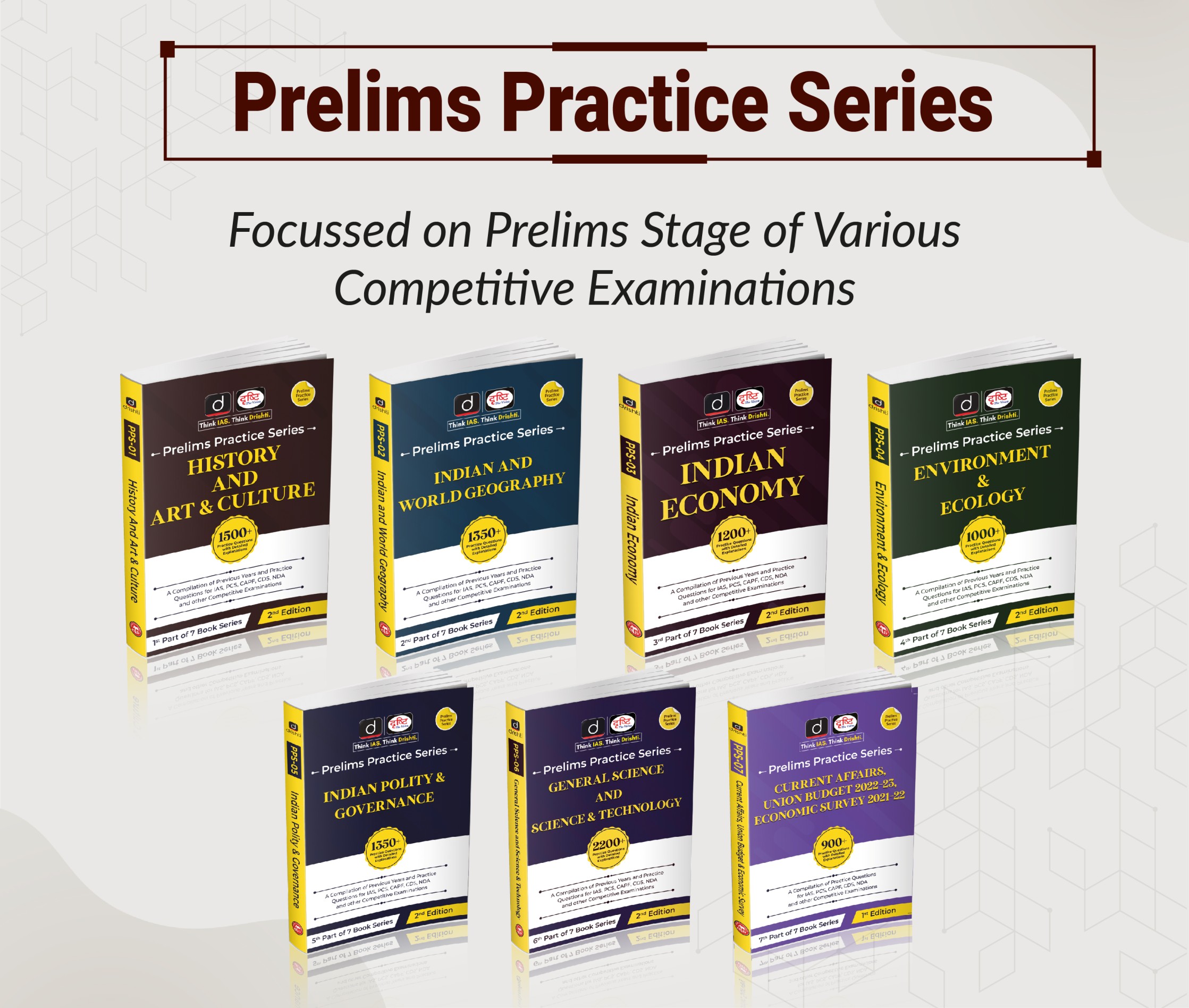
Agriculture
Food Supply Situation in India Ahead of Monsoon 2023
For Prelims: Southwest Monsoon, Food Inflation, Reserve Bank of India's monetary policy, consumer price index
For Mains: Impact of the monsoon season on India's food supply, Role of food supply in influencing inflation, Role of the Reserve Bank of India in monitoring and managing food supply-related risks
Why in News?
- As the monsoon season approaches, the food supply situation in India is being closely monitored. While there are currently no shortages, the spatial and temporal distribution of the monsoon rainfall plays a crucial role.
- The India Meteorological Department (IMD) has forecasted just-about-normal rainfall during the southwest monsoon season (June-September).
- The implications of the monsoon on food supply will have a significant impact on the Reserve Bank of India's monetary policy.
What is the Current Status of the Food Supply?
- Fine Balance in Wheat:
- Unseasonal rain and gusty winds in March and early April in 2023 affected standing wheat crops.
- However, the yield losses were not as severe as initially feared.
- Government agencies have procured about 26.2 million tonnes of wheat during the current marketing season, ensuring sufficient stocks.
- Although wheat stocks appear low, the combined stocks of wheat and rice are ample to meet the requirements of the public distribution system and other welfare schemes.
- Unseasonal rain and gusty winds in March and early April in 2023 affected standing wheat crops.
- Relief in Milk Supply:
- February-March 2023 witnessed unprecedented milk shortages, leading to soaring prices.
- However, the situation has improved due to a comparatively mild summer and favorable pre-monsoon showers.
- Improved fodder supplies and high milk prices have triggered a supply response from farmers.
- February-March 2023 witnessed unprecedented milk shortages, leading to soaring prices.
- Tightrope Walk in Sugar:
- The closing stocks of sugar for the current sugar year (October-September 2023) are projected to be 5.7 million tonnes.
- This level of stocks can meet the domestic requirement for 2.5 months, including the peak festival season demand.
- The main concern is the monsoon's impact on sugarcane, which requires significant water during the growth phase.
- Sugar production for the next year depends on a normal monsoon.
- Edible Oil and Pulses:
- The supply position for edible oils seems comfortable due to viable imports covering domestic crop shortfalls.
- Global price crashes have made imported crude palm, soybean, and sunflower oil affordable.
- Ample stocks of chickpeas and imports of masoor red lentils contribute to a comfortable supply of pulses.
What is the Global Standing of India's Agricultural Sector in 2022-23?
- Milk Production:
- India takes the lead as the world's largest producer of milk.
- Wheat Production:
- Following China, India is the second-largest producer of wheat globally.
- Rice Production:
- India is the second largest producer of rice, and at Number One in exports.
- Sugar Production:
- India has emerged as the largest producer and consumer of sugar, while also being the second-largest exporter.
- Pulses Production:
- India stands as the largest producer of pulses globally.
How Does Food Supply Impact RBI's Monetary Policy?
- Food Supply and Inflation:
- Food supply impacts the prices of food items, which contributes to the consumer price index (CPI) used to measure inflation.
- High food inflation directly affects headline inflation, which reflects overall price changes in the economy.
- High food inflation can reduce consumers' purchasing power, leading to lower demand for other goods and services and affecting economic growth.
- Industries relying on food inputs, such as beverages, may face increased production costs during high food inflation.
- High food inflation can cause social and political unrest, particularly among the poor who spend a significant portion of their income on food.
- Food Supply and Monetary Policy:
- Monetary policy involves regulating money and credit supply to achieve price stability, growth, and financial stability.
- The repo rate, set by the central bank, influences interest rates, including lending rates, deposit rates, bond yields, and exchange rates.
- Changes in the repo rate impact aggregate demand and supply, which influence inflation and growth.
- The central bank considers various factors, such as inflation, growth, fiscal policy, global conditions, and financial stability, when adjusting the repo rate.
- Food supply is closely monitored by the central bank due to its implications for inflation and growth outcomes.
- The central bank assesses the impact of food supply shocks on both headline inflation and core inflation (excluding volatile items like food and fuel).
- Persistence and pass-through of food inflation to other sectors of the economy are also taken into account.
- Government policies affecting food supply, such as minimum support prices (MSPs), procurement, buffer stocks, and the public distribution system (PDS), are considered by the central bank.
- Based on its assessment, the central bank may adjust the repo rate to achieve its inflation target of 4% with a tolerance band of +/- 2%.
What are Government Initiatives Related to Food Security?
- National Food Security Mission.
- National Food Security Act (NFSA) 2013.
- Rashtriya Krishi Vikas Yojana (RKVY).
- Integrated Schemes on Oilseeds, Pulses, Palm oil and Maize (ISOPOM).
- eNAM Portal.
- Minimum Support Prices (MSP) for Agricultural products.
- Pradhan Mantri Fasal Bima Yojana (PMFBY).
- National Horticulture Mission.
UPSC Civil Services Examination, Previous Year Question (PYQ)
Prelims
Q.1 With reference to the provisions made under the National Food Security Act, 2013, consider the following statements: (2018)
- The families coming under the category of ‘below poverty line (BPL)’ only are eligible to receive subsidised food grains.
- The eldest woman in a household, of age 18 years or above, shall be the head of the household for the purpose of issuance of a ration card.
- Pregnant women and lactating mothers are entitled to a ‘take-home ration’ of 1600 calories per day during pregnancy and for six months thereafter.
Which of the statements given above is/are correct?
(a) 1 and 2 only
(b) 2 only
(c) 1 and 3 only
(d) 3 only
Ans: (b)
Mains
Q.1 In what way could replacement of price subsidy with Direct Benefit Transfer (DBT) change the scenario of subsidies in India? Discuss. (2015)


Important Facts For Prelims
Direct-Seeding Method
Why in News?
Farmers in leading rice-growing states are adopting the direct-seeding method as a solution to delayed rains and labor shortages.
What is Direct-Seeding Method?
- About:
- Direct Seeded Rice (DSR), also known as the 'broadcasting seed technique,' is a water-saving method of sowing paddy.
- In this method, seeds are directly drilled into the fields, eliminating the need for nursery preparation and transplantation.
- Benefits:
- Reduction in Labor:
- With the use of drum seeders, only two laborers are required to sow seeds on one acre, compared to 25-30 laborers needed in traditional methods.
- This significantly reduces labor costs and eases the burden on farmers.
- With the use of drum seeders, only two laborers are required to sow seeds on one acre, compared to 25-30 laborers needed in traditional methods.
- Time and Resource Savings:
- By eliminating the need for nursery cultivation, farmers save approximately 30 days in the crop cycle.
- This allows them to start the rabi season early and avoid untimely rains during the harvesting phase.
- By eliminating the need for nursery cultivation, farmers save approximately 30 days in the crop cycle.
- Water Conservation:
- The direct-seeding method reduces water requirements by around 15% as water logging occurs only after a month. This is especially beneficial in areas where rainfall is delayed.
- Increase in Yield:
- According to the results from research trials and farmers’ field survey, after this technique the yield is one to two quintals per acre higher than puddled transplanted rice.
- Reduction in Labor:
- Challenges:
- Weed Growth:
- Weed growth becomes a challenge as seeds are sown directly into the fields.
- Extreme climate:
- High temperatures and deficient rainfall can affect seed germination and crop growth.
- Operational challenges:
- Closed canals, erratic electricity supply, and issues with weed control and pest management.
- Weed Growth:
- Successful Implementations:
- The direct-seeding method has gained traction in various regions, including Punjab, Telangana, and Andhra Pradesh.
- In Andhra Pradesh alone, an NGO has implemented this method on approximately 4,000 hectares, resulting in significant cost savings.
UPSC Civil Services Examination Previous Year Question (PYQ)
Q. What is/are the advantage/advantages of zero tillage in agriculture? (2020)
- Sowing of wheat is possible without burning the residue of the previous crops.
- Without the need for a nursery of rice saplings, direct planting of paddy seeds in the wet soil is possible.
- Carbon sequestration in the soil is possible.
Select the correct answer using the code given below:
(a) 1 and 2 only
(b) 2 and 3 only
(c) 3 only
(d) 1, 2 and 3
Ans: (d)
Exp:
- Zero Tillage, also called no-till farming, is a cultivation technique in which the soil is disturbed only along the slit or in the hole into which the seeds are planted, the reserved detritus from previous crops covers and protects the seedbed. Under zero tillage, the direct seeding of wheat into unploughed soil and with rice residues left behind has proved very beneficial. It saved on water, labour and use of agrochemicals, reduced greenhouse gas emissions, and improved soil health and crop yield and thus benefitted both farmers and the society at large. Hence, statement 1 is correct.
- Direct Seeded Rice (DSR) is a viable option to reduce the unproductive water flows. DSR refers to the process of establishing a rice crop from seeds sown in the field rather than by transplanting seedlings from the nursery. Conventional rice establishment system requires a substantial amount of water. It has been reported that water up to 5000 litres is used to produce 1 kg of rough rice. However, with increasing shortage of water, dry DSR with minimum or zero tillage further enhances the benefits of this technology by saving labour. Hence, statement 2 is correct.
- No tilled soils tend to be cooler than others, partly because a surface layer of plant residues is present. Carbon is sequestered in the soil enhancing its quality, reducing the threat of global warming. Hence, statement 3 is correct. Therefore, option (d) is the correct answer.


Important Facts For Prelims
Purana Qila Excavation
Why in News?
The recent excavations by Archaeological Survey of India (ASI) at Purana Qila (Old Fort) in Delhi have revealed a continuous history spanning over 2,500 years. These excavations are aimed to establish complete chronology of the site.
- Artifacts from various historical periods have been discovered, which revealed 9 cultural levels including Pre-Mauryan, Mauryan, Sunga, Kushana, Gupta, Post Gupta, Rajput, Sultanate, and Mughal.
- The plan is to showcase the findings in an Open Air Site Museum at the fort.
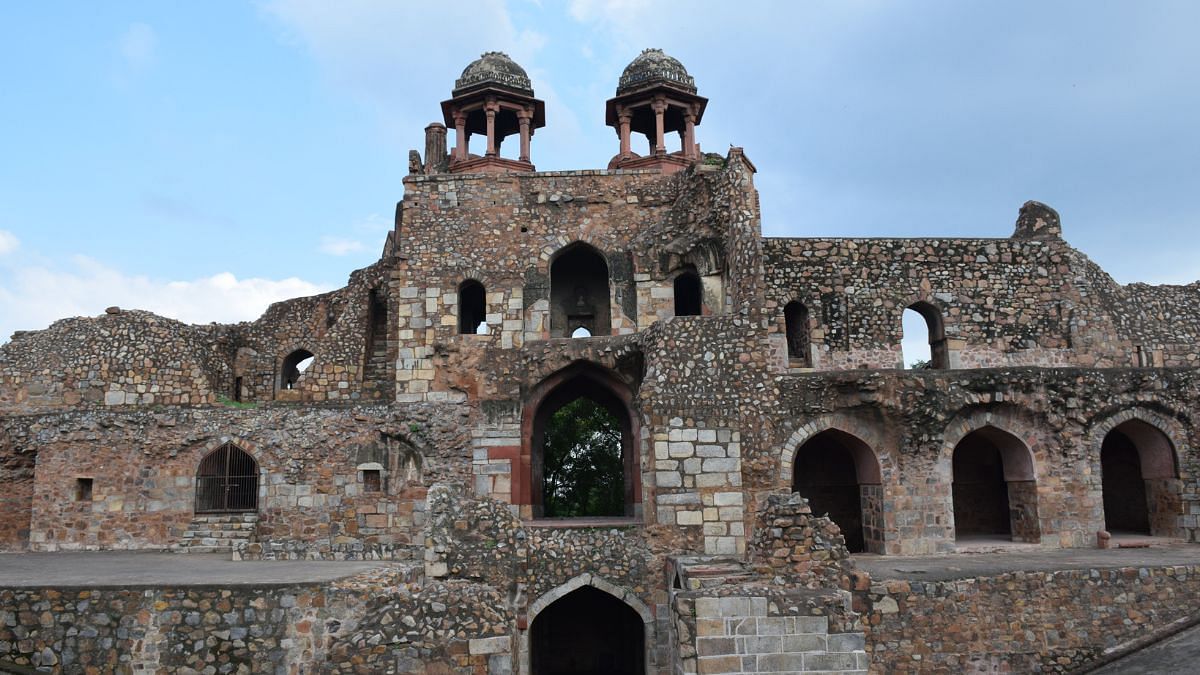
What are the Findings of the Excavation?
- Shards of Painted Gray Ware Pottery:
- These pottery pieces are typically dated to the period of 1200 BC to 600 BC, indicating the existence of human settlements in the pre-Mauryan era.
- Vaikuntha Vishnu Sculpture:
- A 900-year-old sculpture of Vaikuntha Vishnu, belonging to the Rajput period, was discovered during the excavation.
- Terracotta Plaque:
- A terracotta plaque depicting the goddess Gaja Lakshmi, dating back to the Gupta period, was found at the site.
- Terracotta Ring Well:
- The remains of a well dating back 2,500 years from the Mauryan period were unearthed.
- Sunga-Kushan Period Complex:
- The excavation revealed a well-defined four-room complex from the Sunga-Kushan period, which dates back approximately 2,300 years.
- Coins, Seals, and Copper Artifacts:
- More than 136 coins, 35 seals and sealings, and other copper artifacts were discovered at the site. These findings indicate the site's significance as a center for trade activities.
What is Purana Qila?
- Purana Qila is one of the oldest forts belonging to the Mughal era and the site is identified as ancient settlement of Indraprastha (the capital of Pandavas).
- The massive gateway and walls of Purana Qila were built by Humayun in the 16th century and the foundation was laid for the new capital, Dinpanah.
- The work was carried forward by Sher Shah Suri, who displaced Humayun.
- The major attractions inside the fort are the Qila-i-Kuhna mosque of Sher Shah Suri, Sher Mandal (a tower, which is traditionally associated with the death of Humayun), a stepwell and the remains of the extensive rampart, which has three gates.
- The unique features of Indo-Islamic architecture like horseshoe-shaped arches, bracketed openings, marble inlay, carving etc are very prominent in the structure.
- The mosque has an inscription which says, 'As long as there are people on this earth, may this edifice be frequented, and people will be happy in it.'


Rapid Fire
Rapid Fire Current Affairs
Deccan Queen Train
The Deccan Queen train, which commenced service on June 1, 1930, holds a special place in the history of the Great Indian Peninsula Railway, later known as the Central Railway. Over the course of its 92-year history, the train has transformed from a means of transportation to an institution that connects generations of passengers. Over the years, the train witnessed numerous advancements, such as the introduction of a dining car, roller bearing coaches, and the adoption of a distinctive cream and Oxford blue color scheme. It set records as India's first superfast, long-distance electric-hauled, vestibuled train, and even had a dedicated women-only car. Today, the Deccan Queen is renowned for its punctuality and popularity among commuters traveling between Pune and Mumbai.
Green Panacea for Crude Oil Wastewater Restoration
The Institute of Advanced Study in Science and Technology (IASST), Guwahati has made significant progress in addressing the environmental challenges posed by the disposal of formation water, a byproduct of crude oil excavation and processing. Formation water contains harmful components and chemicals that can deteriorate water quality and harm aquatic life when released into rivers and streams. Through rigorous experimentation and research, researchers from IASST have formulated a mixture comprising plant-based biomaterial, biosurfactant (secondary metabolites of microbes), and NPK fertilizer. This innovative mixture has demonstrated the ability to restore formation water within a short time frame. The team has filed an Indian patent for this development.
This "wonder mixture" not only prevents environmental pollution caused by the formation of water but also renders the treated water reusable for various purposes. By utilizing this approach, the harmful effects of the formation of water can be mitigated, leading to a sustainable future. Moreover, the treated water can contribute to the green revolution by enhancing crop production and meeting the increasing global food demand.
E -Cigarettes -The Complexities of Vaping: India's Approach and Concerns
In India, the Union Ministry of Health has directed OTT platforms to promote anti-tobacco health messages and warnings on World No Tobacco Day, emphasising the amended rules under the Cigarettes and Other Tobacco Products Act, 2004.
However, the regulations do not cover e-cigarettes or vapes containing nicotine, which were banned in 2019 due to health and safety concerns. Despite the ban, these devices continue to enter the country through the black market, particularly from China.
E-cigarettes, also known as electronic cigarettes, and vapes are electronic devices that vaporise a liquid solution (e-liquid) containing nicotine, flavours, and other chemicals. They are designed to simulate the experience of smoking traditional cigarettes but without burning tobacco. Instead of producing smoke, e-cigarettes and vapes produce vapour, which is inhaled by the user.
Read more: World No Tobacco Day
Desiccation-Tolerant Plants in India's Western Ghats: Potential for Agricultural Applications
India's Western Ghats, a biodiversity hotspot, is home to a remarkable discovery of 62 desiccation-tolerant vascular (DT) plant species. DT plants possess a unique ability to withstand extreme dehydration, losing up to 95% of their water content, and then revive when water becomes available again.
A recent study shed light on the abundance of desiccation-tolerant species in the Western Ghats, surpassing the previously known count of nine species. The research provides an inventory of these species, highlighting their habitat preferences, with 16 species being endemic to India and 12 exclusive to the Western Ghats. Notably, the study identifies rock outcrops and partially shaded forests, including tree trunks, as crucial habitats for these resilient plants. Nine genera of DT plants are reported as new, also in a global perspective, with Tripogon capillatus representing the first record of an epiphytic DT angiosperm.
By studying these desiccation-tolerant plants, researchers hope to gain insights into the biodiversity and ecology of the Western Ghats and contribute to the conservation of these species. Moreover, understanding the mechanisms behind their ability to tolerate dehydration could pave the way for developing drought-resistant crops that require less water. The study opens up new possibilities for agricultural applications, particularly in regions with water scarcity.
Read more: Western Ghats



